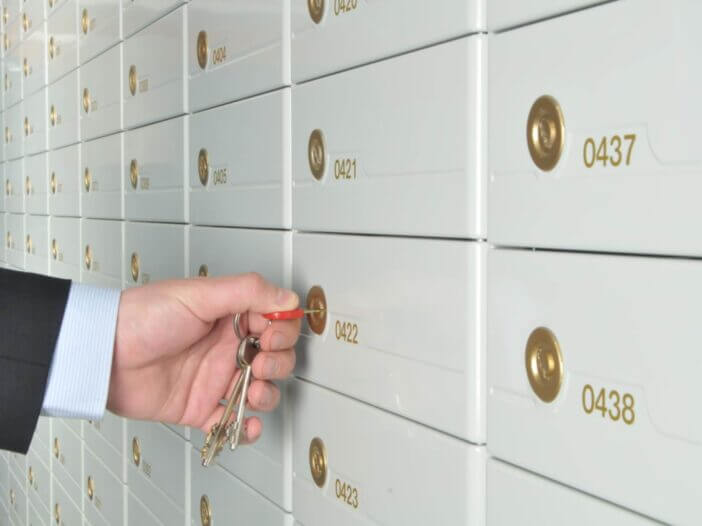
Do you know how to access a safe deposit box after the death of a loved one?
Never fear, you are not alone if you don’t know the answer.
While safe deposit boxes are commonly used to protect valuable items and important documents (such as a insurance policies, a will, or a trust), it is just as common to overlook what will happen to that safe deposit box after you die.
The unintended consequences could be devastating or at the very least frustrating for your family in settling your affairs and estate. Surviving family members might not know a safe deposit box exists or where to locate it. Even if a safe deposit box is known to exist, banks may not be the most cooperative when it comes to allowing family to access it. The unfortunate result is that the very valuables and documents originally sought to be protected end up inaccessible, hidden, or unclaimed.
So what can you do to prevent this from happening?
- Provide a key to the person you wish to have access
This will be essential to ease the process with the bank. California law basically requires that a person requesting access to a safe deposit box provide a death certificate, a driver’s license (or other valid identification), and be in possession of a key.
The bank then must provide access, allow an inventory to be made, and is required to make photocopies of all documents removed from the box. It is important to note that only testamentary documents (a will or trust) can be removed from the safe deposit box. Other items can only be removed by a designated personal representative of the estate.
While, a written signed statement of death by the coroner, treating physician, or hospital may be used in lieu of a death certificate if one is for some reason not readily available, there is not an easy substitute for not having a key.
If a person seeking access to a safe deposit box doesn’t have a key, and is not the administrator, they will be required to get special permission (called letters testamentary or letter of administration) from the probate court to get access. Of course, this will result in a lengthy delay and a needless headache.
- Add a Joint Holder (But with Caution)
Other than their spouse, a person may be tempted to simply add a child or another loved one as a joint safe deposit box holder. This approach might eliminate the probate issue and could turn out alright if the named joint holder is also the named executor or personal representative of a person’s will. However, it can also give rise to unintended consequences.
For example, the joint holder could run off with the items in the safe deposit box if they had unfettered access. Furthermore, what happens if the joint holder is not available because of their death or incapacity? Either result would derail what appeared to be a good plan and also increase the likelihood of estate litigation.
- Transfer to a Living Trust (Best)
When a person engages in thoughtful estate planning and follows through by transferring a safe deposit box to their living trust prior to her death, that person strikes the right balance between asset protection and ease of estate administration. A successor trustee can access the box and its contents with no need for probate. At the same time, the trustee is under a fiduciary duty to follow the terms of the trust in managing and distributing your client’s assets, including those in the safe deposit box. So there would be no worry of them running off with the contents without severe legal reprisal.
The main takeaway here are that it is very important to include a conversation about safe deposit boxes in your discussions about estate planning with your family. While these are never easy conversations, any stress and discomfort of having the conversation will undoubtedly be less than what will be encountered later if you or your loved ones have not planned properly.
Of course, we also encourage you to consult with an experienced estate planning attorney in your area. Accessing a safe deposit box is a necessary component of settling an estate; a family members’ as well as your own. Ensure safe deposit boxes are included just like any other asset and a solid plan of action is in place to avoid the pitfalls described above.
Want to learn more?
(1) Register for a free workshop to hear more about what you need to know to protect what matters most.
(2) Subscribe here to have more helpful tips and information sent directly to you.
